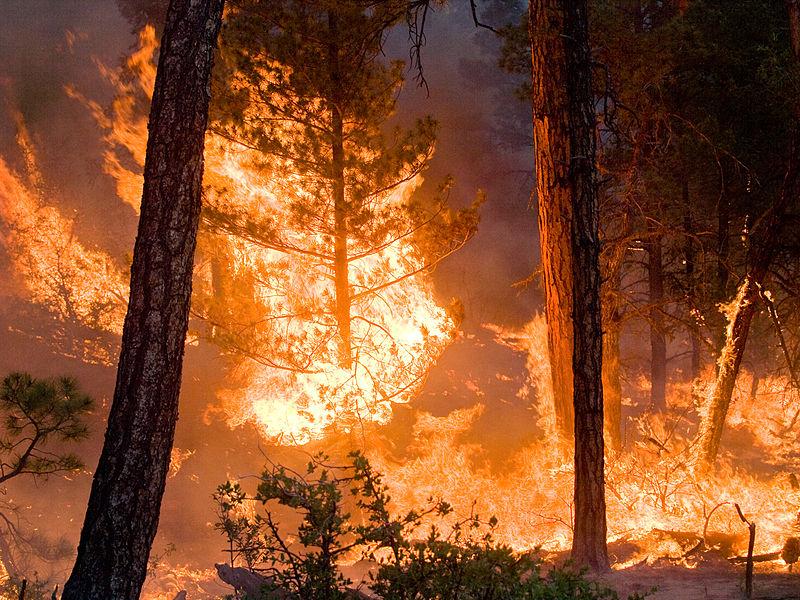New study finds greater risk of wildfires in U.S. from climate change; others see decline
The Whitewater-Baldy Complex wildfire in Gila National Forest in New Mexico is the worst wildfire in New Mexico history. It continues to burn. (Photo by Kari Greer / Gila National Forest via Wikimedia Commons.)
Summer just started this week and yet wildfires are already raging across the United States.
Thousands of acres have been burned in Colorado, New Mexico and other states across the American west.
Drier winters and unusually warm summers are what’s in store as climate change alters weather patterns around the world. According to new research, as greenhouse gases warm the earth, we can expect more wildfires in the near future.
Katharine Hayhoe, an atmospheric scientist at Texas Tech University, the co-author of the study, which appears in the journal Ecosphere, says that in order to have a wildfire, three conditions must be met. There needs to be fuel, or something to burn, there needs to be the appropriate atmospheric conditions, hot, dry and not too humid, and there needs to be a spark, natural like lightning or man-made like an out-of-control campfire or even a cigarette butt.
“The precursor conditions can be affected by climate,” Hayhoe said. “Climate change is shifting rainfall patterns around the world – some places are getting wetter and other places are getting drier. We’re also seeing that climate change is increasing our average temperatures, which raises the risk of having those hot, dry conditions that we need for a wildfire to spread.”
In her research, Hayhoe examined 16 different climate models and reviewed satellite data from across the globe about where fires have happened in the past.
From there, they found many places where the risk of fire, including many in North America, will increase.
“This is really no surprise: a lot of other studies have found that too,” she said. “But what we also found was that in some parts of the world, climate change might actually decrease the risk of fires by bringing wetter conditions.”
That’s not an absolute correlation though. In fact some places that will get wetter will also see their risk of fire increase.
“Fire in different parts of the world is controlled by different factors. In some places it’s more temperature sensitive, other places it’s more rainfall sensitive,” she explained.
In other words, a lot of rain might lead to a lot of vegetation, which would then provide the fuel needed for a fire to burn.
According to Hayhoe’s study, Western Europe and the Russian tundra would also be expected to see increases in wildfires. Eastern Europe, though, and western Russia, not as much.
But where might really see benefits are the tropics and subtropic areas.
“That’s only looking at climate as a driver of fire,” she said. “But because of increases in precipitation, and because much of the fire in those areas is related to precipitation, we expect to see decreases there as a result of climate.”
The wild card in those regions, though, is human activity. Deforestation could counter those climate-based decreases in wildfire risks, she said.
“Climate change is interacting with vulnerabilities that we already have, that don’t have anything to do with climate change. It’s just the way that we’ve built our societies, we’ve built our agriculture, our industry, our infrastructure,” Hayhoe said. “And what climate change is doing is it’s coming along and it’s interacting with each of those in a unique way for each city, for each state, for each region.”
